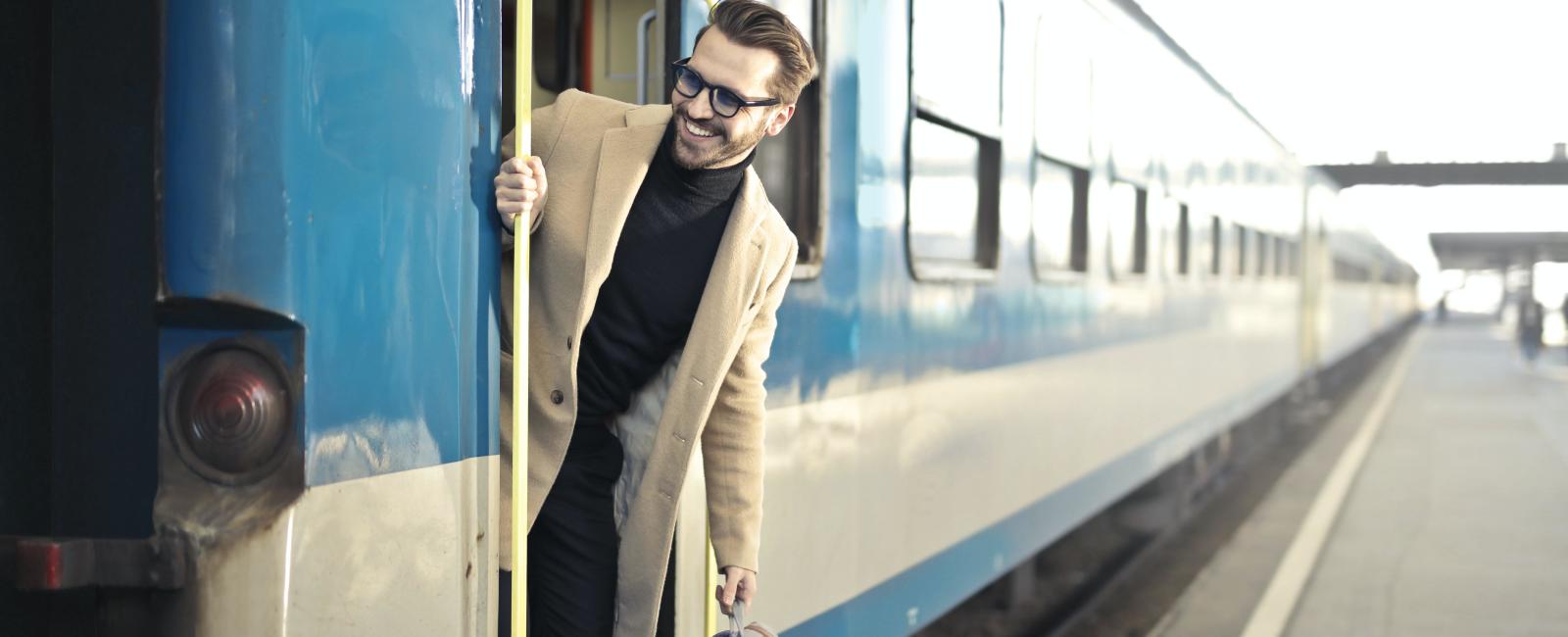Working on the Train: Why the Perfect Office Moves on Railway Tracks

It’s a dark November morning in Ghent, Belgium and I’m opening my laptop to write this article. Cup of coffee on my right, a bowl of oatmeal on my left. Nothing different from a normal working day. Except for one thing: when I finish working at 5 PM, I will be in Berlin, Germany. 800 km from where my office day started. Let’s see how you can turn a train into the perfect mobile office.
9:37 Gent-Sint-Pieters
How long do you want to travel for work? The conventional approach to travel time is to see it as ‘dead time’ that should be minimized. But studies show that this is different for people who travel by train. Only 10% of people who commute by train find that their travel time is of no use. And on the popular Thalys train, almost all passengers (97%) use their train travel time as work time. (Linked page is in Dutch). But how do you do this efficiently?
The first lesson learned: learn to work with what you’ve got. Belgian trains provide power supply, but no wifi. Luckily mobile plans with unlimited data are relatively cheap these days, so you can get internet access by connecting your laptop to your phone. But working offline does have its benefits. No emails coming in, no quickly checking the news, and certainly no aimless scrolling through Facebook. It seems strange, but I manage to get a lot more done without an internet connection.
10:07 Brussel Zuid/Bruxelles-Midi
In Brussels, I switch from the national Belgian train to an international ICE train. Now I do have internet access and I even manage to find a separate silent coupe with a table the size of my desk at home. But of course, trains can be quite different from your fully equipped office desk. Then start with these work activities you can do on every train:
Reply to emails: mails arrive at lightning speed. Many emails get flagged, yet many continue to slide down the inbox relentlessly. Responding to emails requires relatively less concentration, making it a good activity for your train travels since trains can get somewhat noisy. You will arrive at your destination feeling very accomplished.
Work planning: because a train ride usually occurs at the beginning or at the end of a workday, this is the ideal time to make your work planning. What do you want to accomplish today or this week? How much time do you think you will need for each activity? The advantage of making a schedule in the morning is that you can start immediately when you arrive at work. In the evening, it is ideal to clear your head.
Come up with new ideas: A long train ride is perfect for sparking thoughts and ideas. Take a moment to brainstorm on your own. This works especially well when staring out the window at the passing scenery. Unexpected ideas come automatically while I look at the fields with grazing cows, suburbs, greenhouses, and windmills, especially if you add some music.
Writing: There’s something about trains that’s oddly conducive to writing. When I start writing up an article after a long research phase, nothing works better than some time on the train. It allows me to fully concentrate on the content of my text. Train rides are one of my most productive writing moments.
12:15 Köln Hauptbahnhof
In Cologne (Köln), I switch trains again and I have 30 minutes for a quick lunch break. Colleagues are not included, but pretzels are. My last train ride for today is a long one: it will take almost five hours to Berlin. Enough time to figure out some useful tips for working on the train.
1. Bring headphones for focus on the go
People talking softly can make up the perfect white noise, but loud conversations can be an irritating distraction. With noise-cancelling headphones, you muffle these distracting sounds, keeping you focused on your work.
2. Prepare some files for working offline
Internet possibilities can be limited on train journeys, so it is advisable to download some files for working offline. You can also draft and save emails, to send them automatically when you have an Internet connection again. Or you can take some time to read interesting articles you saved in advance.
3. Use the end station as a deadline
Working under pressure works very well for many people. Setting the end station as a deadline to finish this article, helps to keep my focus. And it feels great to get off the train with a clear mind. Speaking of which …
17:10 Final destination: Berlin Hauptbahnhof
By now it’s fully dark outside and the tall skyscrapers of Berlin light up against the night sky. Final destination, end of this article. I’m actually surprised we’re already here. It felt like a normal office day, but with some extra thrill from having changing views all the time. Bonus: today I felt way more focused than usual. Even though travelling by train can be a challenge, the time you spend on it can be put to particularly good use. But of course, if you prefer to listen to podcasts, read a book or catch up on some hours of sleep, that’s also perfectly fine.


